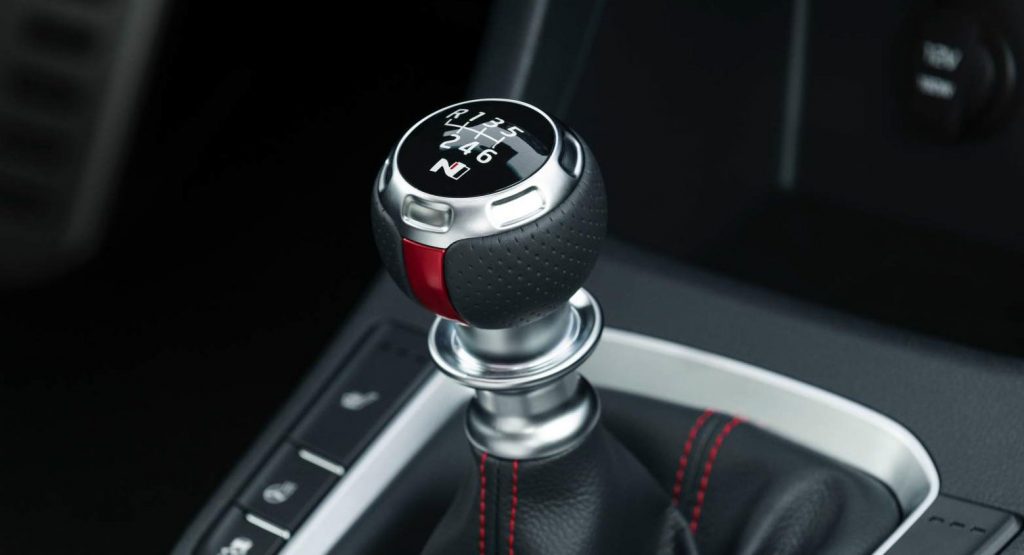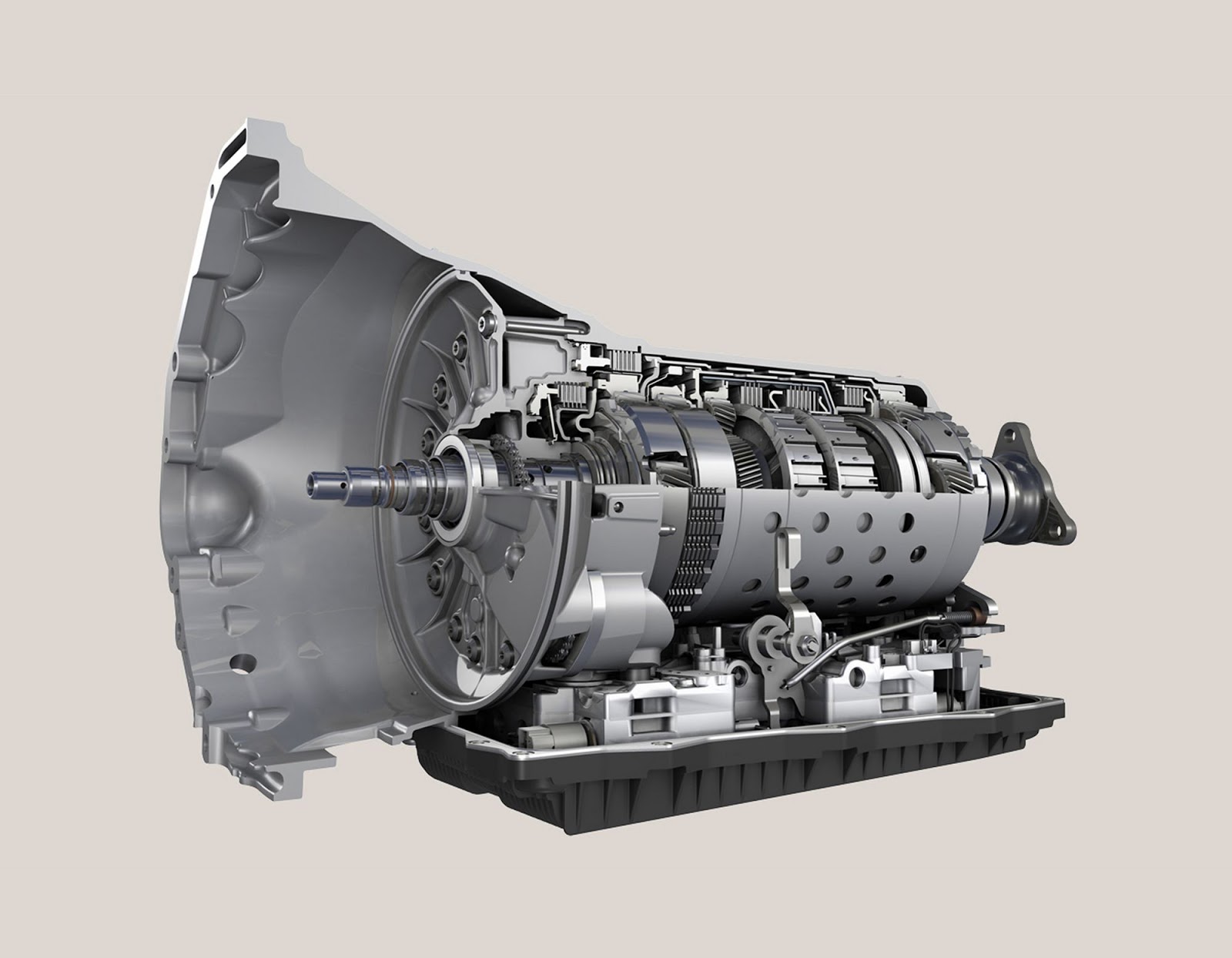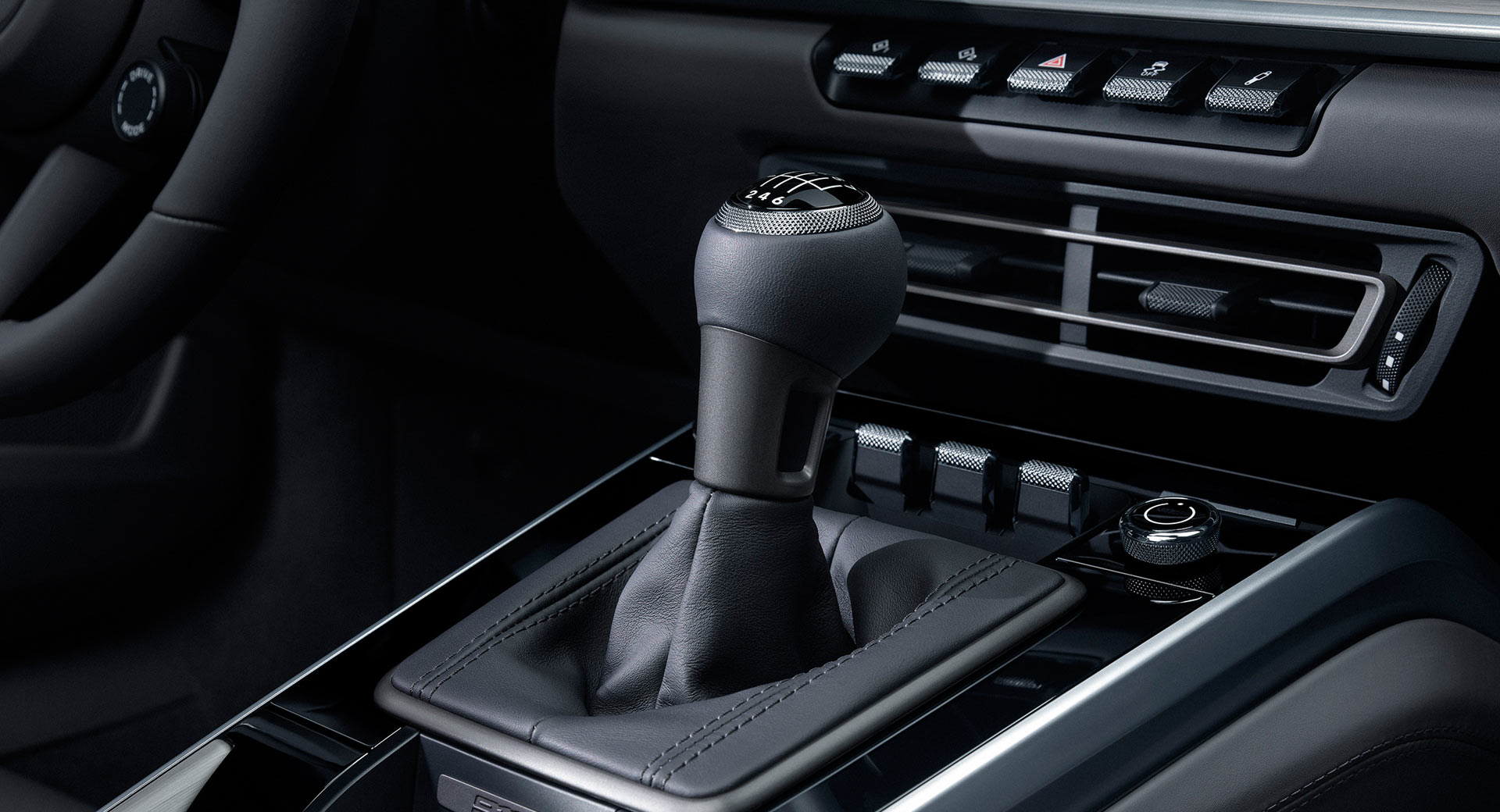A new report from Automotive News Canada suggests that the advent of safety tech may hasten the impending death of the manual transmission. Automatic braking tech in particular, along with other active safety features, may be the final nail in the coffin for stick shifts, which simply don’t perform or marry as well with those systems as their automatic counterparts.
Truth be told, the writing has been on the wall for some time. Safety tech being mandated is the latest in a long line of shifts in the auto industry that will likely spell doom for the manual gearbox.
Automatic Emergency Braking Strikes First
With the proliferation of EVs, as well as the ever-increasing presence of self-driving tech, cars that come equipped with a manual gearbox make up a small percentage of sales. While previously buyers may have preferred the performance and fuel economy benefits of a manual vs. an automatic, modern technology has closed the gap in both areas, effectively relegating the manual gearbox to an enthusiast’s feature.
Despite this, several automakers persist in their manual offerings. But the report questions how long these manufacturers will continue to offer a manual option when AEB systems are made mandatory. The mechanics of making AEB systems work with automatic transmissions are far less complex than doing so for manual cars.
See Also: By 2022 Aston Martin Will Wave Goodbye To The Manual Gearbox
Subaru Canada does not offer their Eyesight safety suite on manual transmission cars. According to the company, this is because their manual vehicles do not have an electronic parking brake needed to prevent creep after AEB engagement. While implementation is technically possible (Mazda opts to stall the car if the clutch isn’t depressed), Subaru cites economic reasons for not doing so.
Mazda Canada reported that in 2016, 19.2 percent of cars sold were equipped with manual gearboxes, but in 2020, that figure had dropped down to just 6.4 percent. With demand falling for manual gearboxes, it’s not hard to see why an extra mandated cost may simply force the bean counters to cull manuals altogether.
Nevertheless, while Subaru Canada reports that stick shifts made less than 10 percent of sales in 2019, demand for manual sports cars such as the WRX/STI and the BRZ increased in the four years between 2016 and 2020.
Speaking to Automotive News Canada, a spokesman for product management at Subaru, Anton Pawczuk, said the company remains committed to offering manual-equipped vehicles. However, regulations could change that in the light of compulsory AEB systems. “If it becomes mandated one day, then we’ll have to take a look at it,” he said.
Read: Glorious Stick Shift Features In 2021 BMW M4, Attacks Track For A Timed Lap
EVs & Hybrids Leave Little Room For Cogs
Another contributing factor sure to be mentioned in the manual’s obituary is the shift in energy sources. Unless you’re BYD, fitting an EV with a manual transmission makes little sense. The same goes for hybrids, a technology that companies such as Toyota appear to be doubling down on.
Jörg Trampler, director of electrified powertrain technology at ZF’s North American engineering center in Livonia, Michigan, states that adding manual shifting to a hybrid drivetrain requires additional technology, such as an electronic clutch. An e-clutch is needed to ensure seamless switching between internal combustion and electric power.
It would thus seem inevitable that more manufacturers will opt not to adapt their latest tech to include the small band of row-your-own-gears enthusiasts. This becomes especially evident with the recent statistics from IHS Markit and ZF Group showing that the global market for manual transmissions is down to 17.1 percent, and just 1.2 percent for North America. The report goes on to say that IHS found that sales of electric vehicles eclipsed those of stick-shift cars in the United States last year.







